Last Updated on September 30, 2013 by Steve Hogg
Heel Wedges are the biggest single selling item in the store, and we thought it was time to reintroduce them.
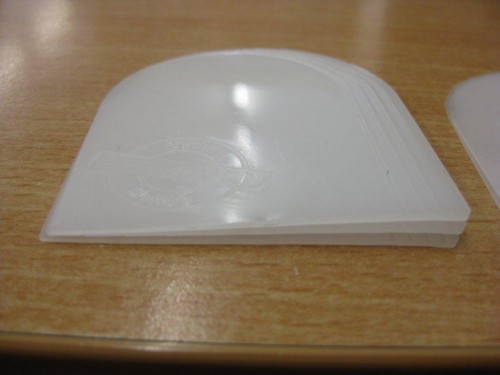
So why a heel wedge and not a cleat wedge?
Here are the pros and cons as I see them:
From a proprioceptive point of view, wedging placement is crucial. If the correct number of wedges is used for an individual but not in the individually correct location, then after an initial period where the Central Nervous System (CNS) responds to the altered stimuli from the feet, it ‘forgets,’ leaving the subject mechanically corrected but no better coordinated than without any wedging. Not because the wedging numbers are incorrect, but because the placement is incorrect. Cleat wedging is a shotgun approach when a stiletto is necessary. A cleat wedge cants the entire foot whereas a significant number of riders need the heel canted only. A minority still need a cleat wedge and another minority need a combination of cleat and heel wedges.
Cleat wedges still have their place but much experimentation has convinced me that most people need heel wedges or a combination of heel and cleat wedges.
The heel wedge is designed to fit the heel cup of any shoe size between size 36 Euro and size 50 Euro. There are cut lines on the wedge and they can be quickly trimmed to size with scissors.
Heel Wedges are in store now and any constructive feedback you care to offer is welcome. The wedges are also part of the Complete Wedge Kit available here.
Bike fitters interested in heel wedges for their use with fitting clients, please click here.
Note: Often, more specific answers to your questions can be found in the Comments below or in the eBooks section and FAQ page.
To learn more about bike fit products offered by Steve, click here.
Do you have a bike fit success story? Please go here to share.
Thank you for reading, return to the Blog page here or please comment below.Comments (59)
Comments are closed.

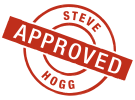
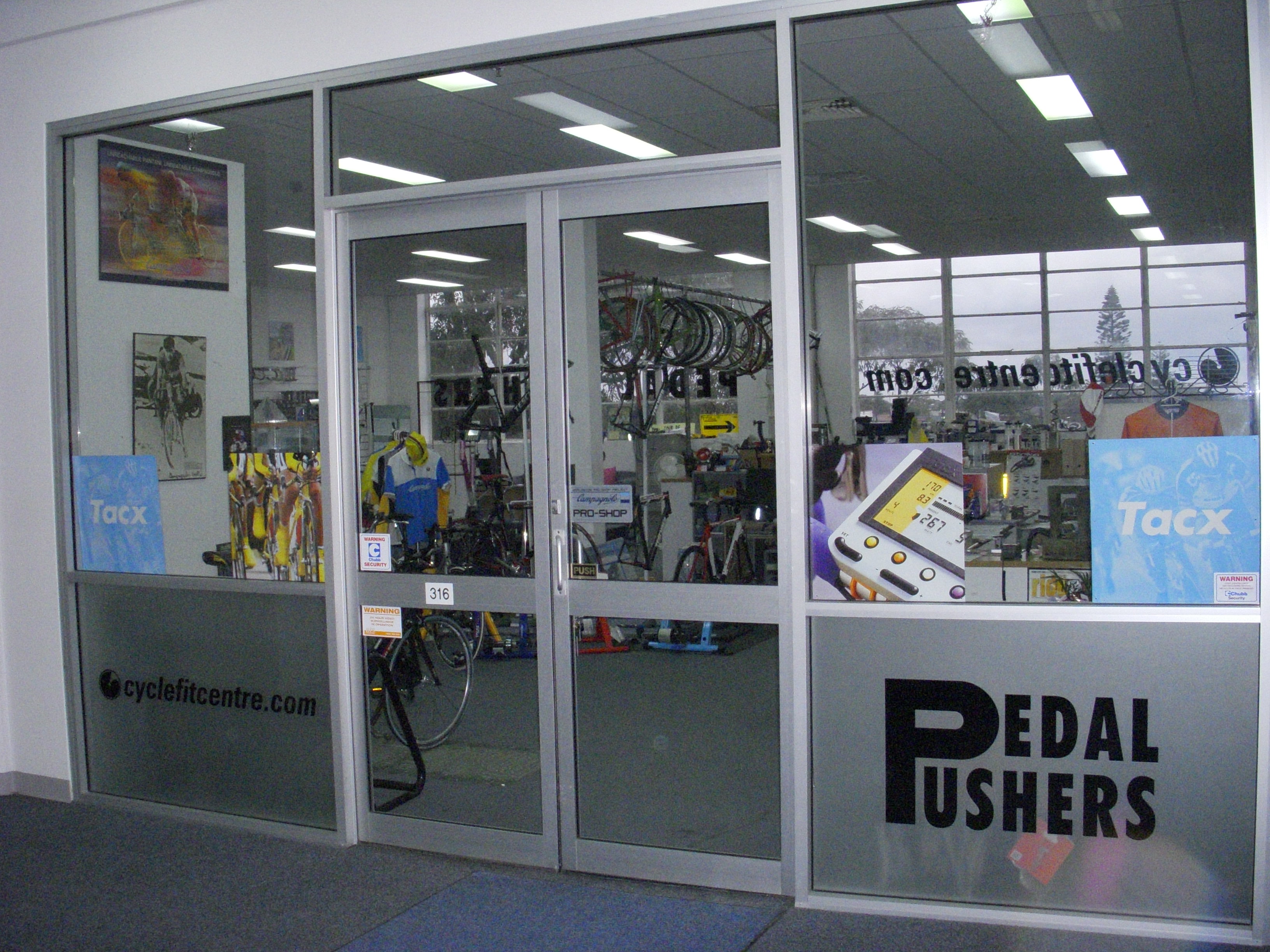
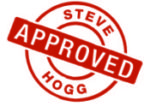

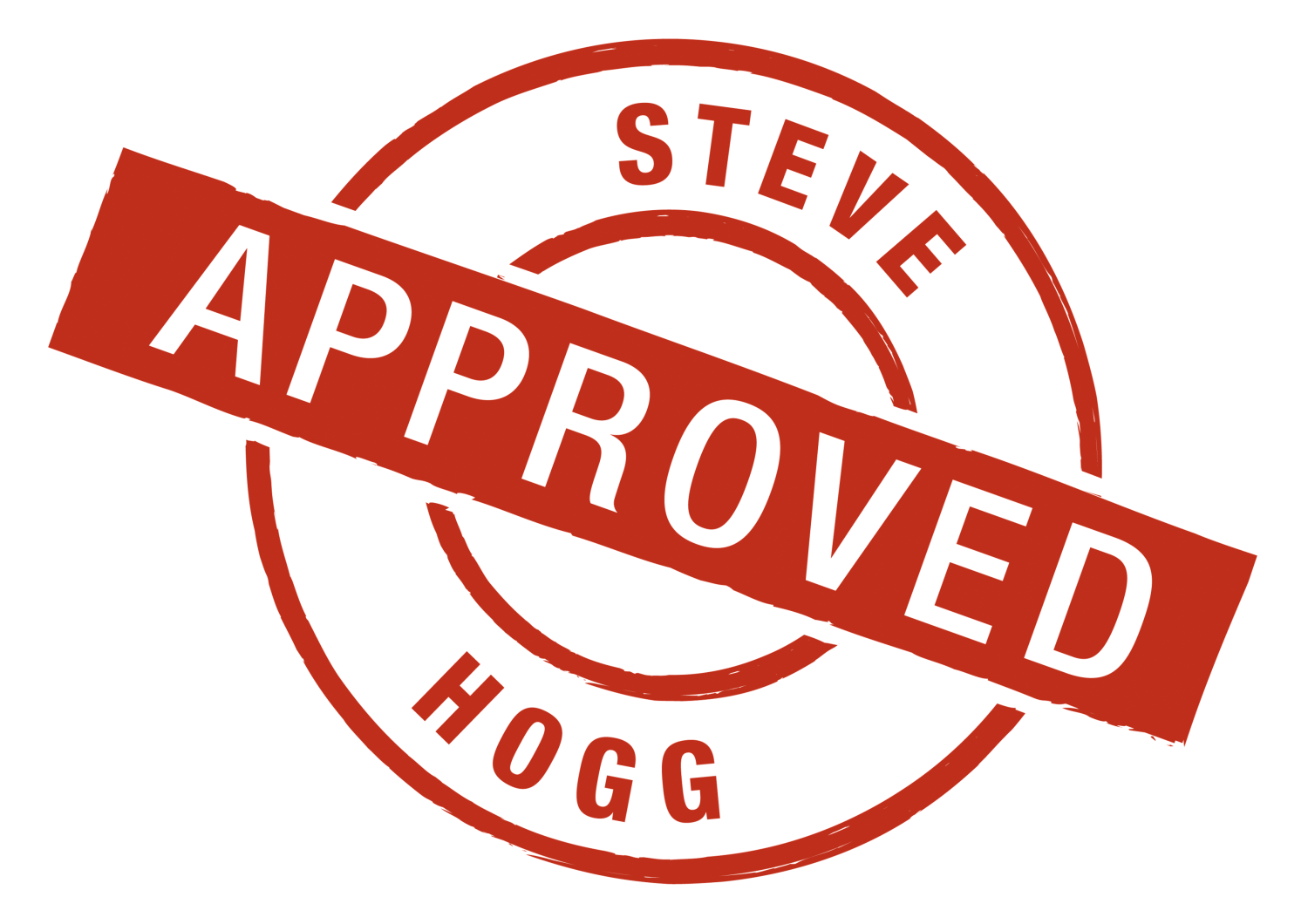

Steve,
I find this very intriguing…along with everything on your blog. But how can you tell the difference when a cleat wedge or heel wedge or ITS wedge is needed. Is there a way of telling which is needed when you are riding? Or do you simply just try heel wedges first because that is what the majority needs? Please let me know, as I am currently using cleat wedges along with ITS wedge. Thanks
G’day Al,
I can tell the difference because I have a detailed testing
procedure which quantifies the quality of proprioceptive feedback reaching the cerebellum from the feet and it’s response to varying stimuli from different methods and mixes of foot correction. It is the subject of a patent application in a number of countries so you need to forgive me for not going into detail.
Without that, trial and error is the best way. There is an instruction sheet download with the heel wedge packs that suggests how to go about this. Simply, the rider must start with Level 2 Arch Support as outlined in the Foot Correction post on Arch Support. After that, experiment with a single heel wedge on each side for 3 – 4 reasonable length rides noting their subjective feelings post ride.
If footplant on the pedal felt more stable; good, keep the wedge in and then trial another one to the point where it becomes obvious that one too many has been used.
If footplant on the pedal felt less stable, then the heel wedge is superfluous and should be removed. The vast majority of riders using Level 2 arch support will need between 0 and 3 heel wedges for each foot. The majority need 1 or 2 so there is a finite number of combinations to be trialled by the rider.
Steve,
I have read an post from you in past about the negative effects orthotics made for walking because of the tendency to have a high heel and when used in cycling it would change the cyclists pedal stroke because the cyclist would have to drop the heel over the top of the stroke more in order to overcome the height of the heel. Are pedaling mechanics changed much with heel wedges? Or not because it is simply canting the heel into it’s natural position rather than lifting the entire foot? Please let me know, as I think this is a great tool. Thanks
G’day Chris,
I’m not sure exactly what I wrote that you refer to but
suspect it was to do with heel lifts to correct for leg length. The problem with orthoses in cycling shoes is that they are prescribed after watching the subject walk or run where there is heel contact with the ground. There is no heel contact in a cycling shoe and the same pair of feet will function anywhere from slightly differently to markedly differently in walking / running shoes on one hand and cycling shoes on the other. That means the prescription for foot correction varies between the 2 activities as well.
Walking / running orthoses rarely have enough arch support for cycling. Walking / running orthoses usually have the wrong degree of cant (wedging) for cycling as well. Sometimes too much, sometimes too little and it can vary between feet.
From what I can see, of the majority that need wedging, approximately 85% are best served with a heel wedge, about 10% with a cleat wedge and the remainder with a combination. Very rarely, maybe once or twice a year, I’ll find a client where a single inshoe forefoot wedge is part of the picture to gain ideal foot correction on one or both feet..
Sounds very interesting. Looking forward to experimenting with the heel wedges.
G’day Jerry,
You’ll be able to shortly. Your order leaves today.
Feel free to experiment on me …
Bugger!!
Just got my cleat wedges in the mail from you yesterday.
G’day Stephen,
I’m happy to take them back and change. It probably
isn’t worth the extra postage though. Your thoughts?
No Steve
I was just being silly.
Happy to buy them and try them given how much time I spend here learning from you for free (not true, I also have shims, footbeds and a lovely “boxed set” of e-books from your store).
G’day Stephen,
Okay then. As long as you feel you are ahead on the
transactions / reading / knowledge acquisition.
Hi Steve
With Level 2 arch support I need to wedge the other way ie valgus correction (consider that a term – I appreciate there may be a more correct explanation!). I currently have 1.5 degrees Specialized wedges in both shoes – need a touch more in the left – and want to replace these in line with your material challenge thoughts. Is this the best product to use?
Cheers
Chris
G’day Chris,
All inshoe wedges are 1.5 degrees but in effect they have the
same mechanical correction value as a 1 degree heel wedge or cleat wedge. Yes, I would suggest you ditch your Specialized inshoe wedges for the reasons you state. Yes, a heel wedge has an 85% chance of being the ideal replacement. And yes, by all means try wedging with thick side to the outside if that is what you feel you need. 3 or 4 rides will confirm or otherwise.
Hi Steve
My “feel” is in a natural position all the pressure is on the 1st MTP area of both feet. The valgus wedge “fills” the gap under the outer forefoot and gives me more secure feel across the foot whilst bringing the knee track in a little. I guess I can see how the heel wedge would bring the knee in but would the mechanics not serve to lift the outer edge of the forefoot also?
Cheers
Chris
G’day Chris,
It is hard to say with certainty without personal contact. If
the rear foot is the root cause issue, a valgus heel wedge will resolve the problem. There is approximately an 85% chance of this being the case. If the forefoot is the issue, the heel wedge won’t help and there is about a 10% chance of this occurring.
The other 5% need some combination of heel and cleat or forefoot in shoe wedging. I have seen 2 people who needed a heel wedge in one orientation and an in shoe forefoot wedge in the opposite orientation so the chances of that being the case for you are fairly remote.
That’s very interesting… Did it happen to be valgus in the front and varus at the heel?
I don’t remember Jason. What stood out in my memory is that it is VERY unusual. At least in my experience.
I gave it a try to see if it helped with some big toe pain I’ve experienced, and the short answer is no. The longs answer is, “Ouch, that doesn’t feel good.” Unusual indeed.
Steve,
Ok I am on a roll, loving the esoles, after reading this post I am thinking of some Heel wedges. The esoles have resulted in removal of all cleat wedges, so where do I stand on needing heel wedges. Cheers Chris
G’day Chris,
that’s a tough question to answer with any certainty. Maybe
you do and maybe you don’t. You can try trial and error. Alternately, when are you next leaving the idyllic North Coast and coming to the Big Smoke?
I have a question about forefoot wedging because I am currently experimenting with it.
Ever since I can remember, my right foot (forefoot) twists on toe off when walking and running. Up until last year, my running orthotics corrected the problem for running and walking. It was not an issue for cycling, or so I thought. But, last year one joint in my right foot has become quite mobile. The joint is right behind my second toe counting from the right-side of the right foot. The excessive mobility happens if I stand too long (which my job requires), run more than 7 or 8 km, and this year even when cycling at no specific time.
Despite using cleat wedges, good eSole arch supports (red arch), taking good care to keep my seat low, and stretching regularly including my arches, the right side of my lower back gets sore on and off from cycling. Also this autumn, the same lower back soreness has started to appear with roller skiing (which is training for cross country skiing) for the first time ever when using the skating technique.
My reasoning is that since my lower back soreness now appears across sports and not just cycling, and my right foot toe off twist has degraded into a highly mobile joint in my right foot, then the source of my problem is this joint mobility. Hence I have been experimenting with forefoot wedging to support the joint in order to eliminate the mobility which in turn would eliminate the low back soreness.
I had some Bike Fit wedges which were made for use inside cycling shoes on hand. I have flipped them upside down so that the thick edge is on the outside. I use two wedges. So far, there has been improvement, but the mobility hasn’t been eliminated at all times, just sometimes. The low back soreness still appears (in both sports) but takes a longer workout to do so and is now only a dull distraction the day after a workout.
My question is: Am I on the right track to solving this problem — excessive forefoot mobility in one joint which I believe leads to my sore back issues in cycling, and now in cross country ski skating as well? Have you come across an issue like this before?
And now… off to buy your heel wedges. Can’t wait to experiment with them, and replace my cleat wedges.
Thanks for your awesome blog and to everyone who participates in it.
G’day Konstantin,
What you are asking in effect is whether the foot
problem is the chicken or the egg in the situation. The answer could be either. One thing I would put to bed before settling on a possible solution is whether there is a disparity in leg length or not. Many times I see clients with long term problems on one side only on or off the bike or both, who have seen a multitude of health professionals with little or no result and the basic issue is a shorter leg on one side. Most of the time they have been told that this is not enough to be a problem OR no one has looked for it. I don’t know that this is your problem but it is worth ticking that box. And by X ray, not external measurement.
External measurements of leg length competently done have a plus / minus error factor of 5mm which is too much for my taste.
Assuming you do this and find that there is no difference, you still have the problem. I’m a great believer in self help providing you have even half an idea of what you are doing. If you can’t find a semi permanent solution, find a really good podiatrist. You will need a podiatrist who fully understands a whole of body, global approach to their profession. You will find that these are in the minority.
Additionally, I know you spend part of the year in Canada. Where?
I might be able to point you at the right person.
Steve,
After reading foot correction part 1, I just replaced my stock Bontrager efit insoles with the kit that comes with the different heights, and am noticing a positive improvement already (after one 20 mile ride, and asymmetric levels of arch support that provide a symmetric level 2 “intrusion”).
I’m looking at wedging next, especially on my right, which tends to overpronate more severely, causing medialization of my knee during pedaling (improved with the arch support though!). I’ve been diagnosed in the past with a hyperflexible midfoot, which is just lovely with size 49 feet.
My question is: With these wedges, which are only tapered medio-laterally, do you find it creates an uncomfortable lip at the front of the wedge, especially with multiple wedges? Do you need to do anything to soften that transition, as is found in bidirectional tapered wedges?
Thanks, and I am loving your site. I’ve made very positive improvements in my bike fit from my initial LBS fitting regarding seat height/setback. They used KOPS, and adjusting my setback further rearward for “balance” is helping an issue I’m having with bilateral median nerve distribution hand numbness.
G’day Chris,
As an outsider looking in, I get the impression that
Bontrager went with such a low arch support in their version of Esoles so as not to risk discomfort to anyone by having too high an arch support. Which makes me wonder why they bothered instead of using the normal fairly useless type insole that other shoe manufacturers use.
Re the lip formed at the front by using multiple heel wedges. I have been using heel wedges, whether modified 3 hole cleat wedges or prototype heel wedges for some years with clients and with myself. What you suggest has yet to be a problem. I need more wedging than most (I’m a high functioning ‘mess’) and have 4 under the left heel and 3 under the right without discomfort. No one I’ve fitted with any form of heel wedge has complained of discomfort from the drop off of heel wedges on the thick side. I think the thickness and foam density of Esoles and the occasional Superfeet I use are the reason for that. In addition, the heel wedges are long enough from front to back that the lip you speak of is in front of the heel and very lightly loaded if at all.
I get all the ‘unusual’ customers and the local Esole distributor tells me that I order a disproportionate number of 47.5, 48.5 and 49.5 Esoles. None of my big foot customers have complained of a lip. That doesn’t mean that it won’t occur, just that from experience to date, I think it unlikely.
Hey Steve,
Was wondering if you flat feet, do you need to worry about arch support? Also is there any benefit to adding heel wedges to your shoes assuming your forefoot position is correct? Thanks
G’day James,
Flat feet are interesting in that they often need far more
arch support than people think. I’ve lost count of my flat footed customers who ended up with the highest or second highest Esole arch module before it felt like the desirable ‘moderately intrusive’. Generic arch supports like Superfeet have a low arch support that is almost always not enough support for flat feet.
Re your second question; what do you mean by “………..assuming your forefoot is correct?”
Ive found this also. The flatter the feet as a general rule, the more arch support will be required.
Im an example, with esoles im using the largest support on the right and the second largest on the left and im what you would term fairly flat footed.
This has been the same for most fit clients, but there are the odd few where its not the case.
But it also depends on how you define the term “flat footed”. A lot of the people I see (myself included) are generally only “flat footed” when under some compressive load. When the foot is not compressed on the floor/shoe etc and hanging idly, they often have arches that look “normal”.
On the money!
getting there slowly steve….slowly
We all are Stuart.
My exact experience (me and others I know) – without load I have arches that could span a river but under load they collapse. I had to order the black eSoles arch for one foot and it is still a touch low … The best part of this blog, besides Steve’s wisdom, is that I get to find out how mostly ordinary I really am!
Craig,
if the highest (black) arch support feels low, tape a layer of gel cork tape underneath the outermost edge (side nearest the crank arm) of the arch module. That will give an equivalent change in arch support to increasing one size of arch support. If you need to, add a second layer of gel cork tape as I had to do yesterday for a gent with a truly collapsing arch.
Thanks Steve – I used this method on my eSoles until the blacks came in and will try another layer now. It is amazing what a difference it makes.
It works and I use the same under my left arch with the black module.
Steve,
When taping the gel cork tape, do you place the gel portion facing the arch support and the cork portion facing the sole of the shoe? OR does it not matter. Thanks
G’day Snapster,
It probably doesn’t matter but it has been my practice
to place the gel layer against the arch support module.
Steve,
I think I’d like to see a photo of this approach to fully understand exactly where and how the cork tape is being applied. I believe I understand the description but I want to be a little ‘surer’. By underneath you mean stick the tape onto the underside of the arch support module ie directly onto the black plastic, not onto the blue foam which covers the upper surface of the plastic module.
Many thanks, JT
G’day JT,
Your understanding is correct. Use gelcork bartape as it doesn’t compress as quickly as the standard cork bar tapes. Lay it full length of the arch support only, along the inner outer edge of the arch support. It won’t look like it does much but as you will feel when you put the shoe on, it does.
Do you still need a pic?
I think a pic would be good for this since there are several people that are asking about it and seems like many people are needing the addition to the arch support. Just thought this could help save you some time in your blog Steve 🙂
Okay, coming soon.
To those who asked, here is a pic of the base of an Esole fitted with heel wedges and a layer of gel cork bar tape.
Click on the photo for a larger version in a new tab.
Steve you’re the best, thanks for the photo. Very much appreciated! JT
You’re welcome Jon. I hope it helps.
Thanks for that first answer Steve. Apologize about the confusion on the second one. I guess what Im trying to say is if you’ve addressed the forefoot and those corrections are working, is there any added benefit by addressing the heel as well. What I was thinking is putting a varus wedge in my heel to match the one in the front, but I dont know if that is good logic or not?
G’day James,
If you have a forefoot wedge or wedges, a heel wedge will
increase the total foot correction. If you are happy with your cleat or inshoe wedge(s) but curious about whether a heel wedge or wedges is a better solution, the answer is yes……………….85% of the time and no, for the remainder.
If you decide to experiment, replace your other wedges 1 for 1. So if you are using 2 cleat wedges or inshoe wedges, remove them and fit 2 heel wedges. Then you can assess whether the change is better, worse or makes no difference.
Hi Steve
I use 1 yellow hand-cut-up 3-hole wedge, sticky taped under the e-Sole heel, as you demonstrated in your other BLOG post photo. It seems to work well enough – I use it now, it replaced the 1 cleat-based wedge you fitted me with in mid 2008. To be honest I did not notice much/any difference, good or bad, when I switched from 1 cleat based wedge to 1 heel based wedge re comfort/performance. If I remove that 1 wedge completely (cleat or heel) then I notice its absence right away (a twisting knee sensation even after 2-3 rides) so I still do use it, despite having a ‘level 2’ arch support from eSoles…. Anyhow to the question – is your ‘new design’ 1 heel wedge likely to improve things if I replace the 1 hand-made heel wedge as per your earlier photo? I am looking for educated guess in percentage terms – I understand it will be impossible to tell for sure.
G’day Yuri,
Okay, it seems like you need a heel wedge but your question is
whether your cut down cleat wedge is doing the job as well as the purpose made item. That answer is probably yes. I spent a lot of time and money on developing the heel wedge because there are minor shortcomings with using a cut down cleat wedge in the heel that I wanted to eliminate and have done so.
In your case you can feel the absence of a heel based wedge immediately so I would suggest that you leave as is. At least until your in Sydney next.
When designing my carbon shoe shell in order to create an optimal ambience I decided to form its side walls and heel like a bath tub. This I figured would have the advantage that riders with pro- and supination problems as well as cyclists with a Taylor’s banyan won’t suffer from an upper glued onto a flat sole, so form an edge. My shoe’s heel cup would reach up high to the Achilles tendon so the calcaneus would comfortably snug into a chamber rather than slip up and down. The upper edge of the heel box would open like a Y so to create sufficient space for the tendon. This is why the model was named Y²
Today, many shoe companies have adopted my solution. Whether it is additionally necessary to support one side of the heel with a shim I don’t know. Still I’m interested to hear and read more about your theoretical and practical approach concerning your finding so I can improve my services for our customers.
G’day Gotz,
You know me; it works or I wouldn’t do it. We’ll talk more
about this.
Steve, I feel my knees track best with most of my weight on the first metatarsal head and big toe on both feet. It would seem some wedging on the outside of the foot would help fill in the space. Should I try the heel wedges or ITS forefoot wedges first? Thanks.
G’day Jkarrasch,
As a general rule, it is advisabe to wedge with thick
side towards the pressure point. In your case this means thick side of the wedge(s) on the inside of the shoe, not the outside as you suggest. I won’t say that this is a universal rule but it is as close as you’ll get to a universal rule without being 100%. Before wedging, it is crucial that you have Level 2 / mildly intrusive when standing arch support as outlined in the post on arch support.
Re choice of wedges; for experimenting, I would suggest BFS inshoe wedges as they will directly correct the forefoot if that is the problem and indirectly correct the rear foot if that is the problem. They can be swapped in and out easily and you can take extras with you in a jersey pocket when you ride.
However they take up too much room in toe box if more than 1 is used for long term use. They’re fine as a diagnostic tool but that’s about it. Once you establish to your satisfaction what number and orientation of wedges to use, then there is an 85% chance you will need to use heel wedges, a 10% chance that you will need cleat wedges and a 5% chance you will need combination. So at that time I would suggest you trial heel wedges in the first because the odds are greatest. Use the same number and orientation of heel wedges as in shoe wedges. If the heel wedges feel worse than the inshoe wedges in terms of stability of foot on the pedal or in knee
tracking, then you need cleat wedges of possibly (but less likely) a
combination of both heel and cleat wedges.
Hi Steve,
I am experimenting with Heel Wedges and went for my first ride with 1 in each shoes as recommended. Should I continue to ride for 3 or 4 rides even if I felt that I could use another in the left shoe? I am wondering if there is an adaptation period, or if it is okay to put another one in the left for the next ride. Right away I felt the right foot feel solid on the pedal, it felt great, but the left foot was a little less stable and still “floated” on the pedal a little.
I am not 100% sure if it is the heel wedges (or lack there of) that is causing my foot to feel less stable on the left or a saddle height that is a little too high because I had lowered my saddle 7mm from where it was. Please let me know your advice. Thanks!
G’day JOS,
I would leave it for a few rides. The reason being that when
a change is made, it often triggers a process of adaptation and there needs to be enough time for that to run it’s course. That’s why I advocate having a once weekly “wedge ride” while working this out. For instance, the right foot feels solid and stable at the moment. That suggests that your CNS likes the change. If after a few rides, the right foot goes back to feeling ‘normal’ (for you) rather than stable and solid, add another heel wedge on the right side.
I assume you have good arch support?
If not, get some Esoles.
Re your question; I assume you meant that the left foot felt less stable than the right foot with heel wedge added?
Or did you mean that the left foot felt less stable after the heel wedge was added?
If the former, you are unlikely to be running a risk by trying a second heel wedge on the left but leave it for a few rides before trying it.. If the latter, I would remove it for the time being and possibly experiment with a second heel wedge on the right. Again, let a few rides elapse first.
Re your comments about seat height. Read the seat height post and perform
the seat height test before proceeding further. That way you are
eliminating seat height as a variable.
Ok Thanks Steve I will leave the wedges in for a few more rides. And Re about what I said of the left foot, I meant that I added a wedge to both feel (the right felt solid) and the left felt less stable…a little more stable than without the wedge on the left, but not fully stable like the right. Yes I have level 2 with ESoles. I will let you know how I make out after the week is over. Thanks again.
G’day Steve.Subject: sinus tarsi syndrome / Speed Play long axle/ Heel wedges
Tuesday, 15 November 2011 Hello Steve,
Long story so will try get to the point.
I use Speed play Zero peddles. Am bow legged with a toe out on the right foot running and riding, right leg dominant so I always un-cleat right side. 67y male
Had an accident, March 2010, whilst cleating and snapped the foot over the pedal and stretched the ankle ligaments.
Two days later collapsed whilst running due to sudden intense pain and could not run for 18 months due to ‘sinus tarsi syndrome’ and other inflammatory conditions around the ankle ligaments.
Treatment 3 cortisone injections,5mm heel lifts, arch support plus time and Mobic anti/inflams.
I can now run twice a week max 10k but ride about 150/200k per week.
Because of the right leg and foot turning out I need to allow the peddle max float and have the cleats medially set on the shoe so as not to clip the rear stay with my heel.
However when I am standing over the bike with left foot cleated [traffic lights etc.] I often roll the right foot laterally on the cleat base and feel stress in the ligaments around the injured area.
Q: Will I roll my foot [supinate] and stress the lateral ankle ligaments less by using a longer axel and moving the cleat closer to the out side of the shoe thus bringing the foot into a workable position but being more stable when standing on the shoe cleat ? Also would you recomend heel wedges ?
If the answer is yes can I purchase a longer axle for my Speedplay peddles from you ? or other suggestions.
Many thanks and appreciation for your guidance.
—
Best regards,
Westly Windsor:
G’day Westly,
Sorry to hear of your problems. In answer to your Question 1: There are two possible reasons for you rolling your ankle. The first is that your right knee tracks vertically over the centre of the foot but that having the cleat all the way in (which moves the foot all the way out) and your lax lateral ligaments combine to make it more likely that you will roll your already unstable ankle. If this is the case, then I would suggest the Plus 1/4 ” axles with the cleats moved all the way to the outside of the shoe. That will give you the same effective foot separation distance on the right side but because the cleat is now moved closer to the shoe, should ensure a more stable foot on pedal and less chance of rolling the ankle.
The second possibility is that because of the bowed leg, even with cleat all the way inboard on the right, your knee many not descend vertically over the centre of the foot and may descend further out than that. If that’s the case, then you may need the Speedplay plus 1/2″ axles or even a Pedal Spacer of 20, 25 or 30mm. You will need to judge just how your knee tracks in relation to the foot.
One other thing that needs mentioning is that you say that you always unclip the right foot first. Alternate at every set of traffic lights or stop sign. It will feel weird for a week or so and then you will be fine. This is something that I suggest to fit clients. Riding a bike is a symmetrical exercise and learning to alternate each foot when stopping briefly is one of the little ways that the rider can be more symmetrical on their bike.
In answer to your question 2, there is an 85% chance that heel wedges would benefit you but I can’t say for certain. What I strongly suggest is before experimenting with heel wedges, install quality arch support in the form of Esoles Supportives. Wedging of any kind without arch support is like a half baked cake.
In answer to question 3: Yes, in some sizes. I have no difficulty in sourcing Speedplay Zeros in all 5 axle lengths but have found that supply of the axles alone is sporadic. Let me know what axle length you need and I’ll see what I can do.
Hi Steve. I just received my heel wedges but I am a bit confused as to how to mount them on my Superfeet insoles. The bottom of the insoles are rounded where the heel is and there are raised portions to the sides (I’m sure you know what they look like). There is no flat surface on which to attach the wedges. Do you have any tips on what to do? Thanks.
G’day Robert,
Cut one heel wedge as a trial fitting so that it fits
snugly into the heel cup of your cycling shoe. If in doubt about what cut line to use on the heel wedge, cut along one at a time trying the wedge for fit each time before cutting again. Once you are happy with the width, tape the heel wedge with thick side facing the inside edge (side nearest bike) to the underside of the heel of the Superfeet insole as per the instructions you downloaded. The projections on the underside of the heel of the Superfeet won’t make any difference as the heels wedges don’t compress.
As an aside, do the Superfeet give Level 2 arch support; that is mildly intrusive?
If unsure, see the post Foot Correction part 1 – Arch Support for more detail. If yes, then no problem. If not, before doing anything with the heel wedges, get yourself a pair of Esoles Supportives, work out what height of arch module to use and then begin to experiment with heel wedges.
Steve, thanks for your response. I finally did manage to get the wedges attached to the bottom of my Superfeet and will give them a try tomorrow. The Superfeet have worked well for me so far, however my big problem is that my right foot has a high instep and my Sidi shoes do not provide much room for thicker insoles. Unfortunately, I cannot invest in new shoes at the moment. Cheers!